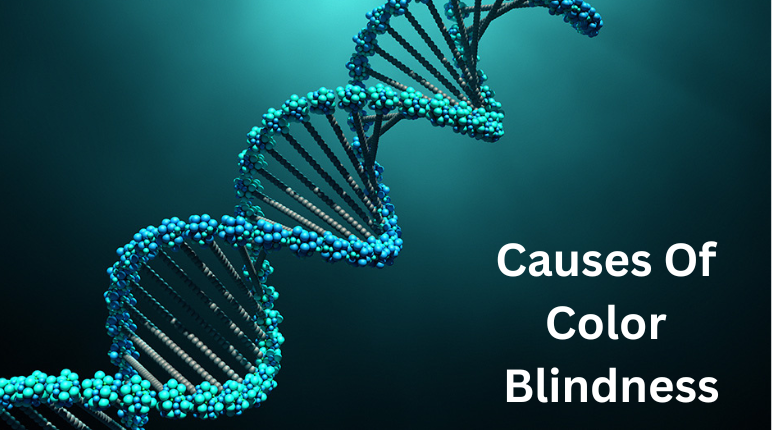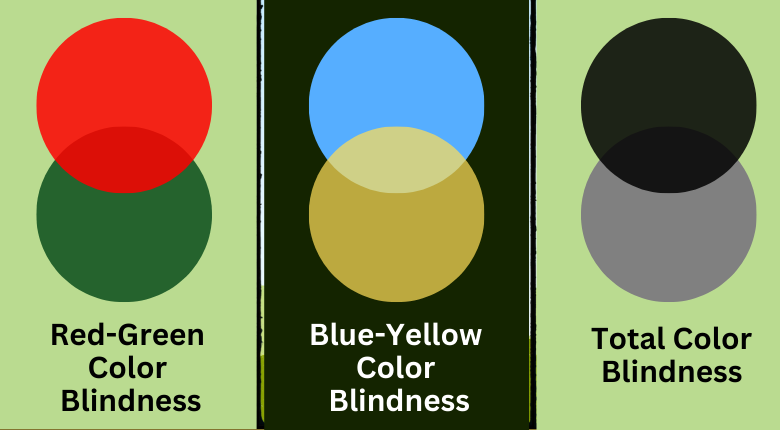Causes And Treatments For Color Blindness
Color blindness is a visual impairment that affects a significant portion of the population. While most people perceive a wide range of colors, individuals with color blindness have difficulty distinguishing certain colors or perceiving them correctly.
This article explores the causes of color blindness and the available treatments to manage this condition effectively.
Color blindness refers to the inability or reduced ability to perceive certain colors. Most cases of color blindness are hereditary, meaning they are present from birth.
The condition can range from mild to severe, depending on the extent of color perception impairment. While color blindness is typically a lifelong condition, it can be managed with certain interventions.
Different forms of color blindness affect about 8% of men and 1% of women. 300 million people around the world have this condition that is more accurately called Color Vision Deficiency (CVD).
There is no cure for color blindness. However, there are some exciting new developments in corrective lenses to help people with color blindness see their true colors!
What Causes Color Blindness?

Color blindness can be attributed to various factors, both genetic and acquired. Understanding the underlying causes is crucial in diagnosing and managing color blindness effectively.
1. Genetic Causes
The most common cause of color blindness is genetic inheritance. Certain genes that encode for the photopigments responsible for color vision can undergo mutations or alterations, leading to color vision deficiency.
These genes are located on the X chromosome, which is why color blindness is more prevalent in males. If a woman carries the altered gene, she may be a carrier without experiencing color blindness herself.
2. Cone Cell Abnormalities
Color blindness occurs due to abnormalities in the cone cells of the retina. Cone cells are responsible for perceiving colors and are categorized into three types: red, green, and blue cones.
Any defects or deficiencies in these cone cells can result in color vision deficiency. For instance, if the red or green cones are affected, it can lead to red-green color blindness, the most common form of color blindness.
3. Acquired Causes
Color blindness can also be acquired later in life due to certain health conditions, medications, or exposure to specific chemicals.
Some underlying conditions that can contribute to acquired color blindness include age-related macular degeneration, glaucoma, cataracts, diabetic retinopathy, and retinal detachment.
Additionally, certain medications, such as those used in the treatment of epilepsy or high blood pressure, can have side effects that affect color vision.
Exposure to certain chemicals, such as carbon monoxide or lead, can also lead to color vision deficiency.
It is important to note that color blindness cannot be prevented or reversed, especially in cases where it is genetically inherited.
However, understanding the causes can aid in early detection, proper diagnosis, and the development of strategies to cope with and accommodate color vision deficiency.
Types of Color Blindness

Color blindness is categorized into different types based on specific color perception difficulties. The most common types include:
1. Red-Green Color Blindness
Red-green color blindness is the most prevalent type, affecting individuals' ability to distinguish between red and green colors.
It can manifest as either red weakness (protanomaly), green weakness (deuteranomaly), or complete absence of red or green sensitivity (protanopia or deuteranopia).
2. Blue-Yellow Color Blindness
Blue-yellow color blindness, also known as tritanopia or tritanomaly, affects the perception of blue and yellow colors.
Individuals with this type of color blindness have difficulty distinguishing between shades of blue and green, as well as yellow and violet.
3. Total Color Blindness (Monochromacy)
Total color blindness, also called monochromacy, is a rare form of color blindness where individuals see the world in shades of gray. This condition is caused by the absence or malfunctioning of all three types of cone cells in the retina.
Diagnosing Color Blindness
The most common test for color blindness is the Ishihara Plate Test, where the patient looks at a series of 38 circles made up of colored dots. Each circle contains a shape (usually a number).
Some are designed to be detected by a person with normal color vision, while others will only be clear to a person with color blindness. This test can help an eye care professional determine if the patient has CVD.
Color Vision Deficiency testing is especially important for young children. While there is no treatment to cure the condition, knowing that a child cannot see colors properly is useful for their school experience.
You don’t want to have your child told they are wrong if they can’t identify a color! It can also affect their ability to read the blackboard, even if they otherwise have 20-20 vision.
There are some specialized tests to determine if a person with color blindness can carry out the duties of a job.
The Farnsworth Lantern Test identifies whether a person can distinguish between the lights used for safety purposes in aviation and other types of transportation.
In recent years a more specialized test has made it possible for some color-blind people to become pilots.
Treatments for Color Blindness

While there is currently no known cure for color blindness, there are several treatments and management strategies available that can help individuals with color vision deficiency better navigate their daily lives and enhance their color perception abilities.
1. Color Correction Glasses
Color correction glasses, also known as color blind glasses, are specially designed eyeglasses that can enhance color perception for some individuals with color blindness.
These glasses work by filtering out specific wavelengths of light to improve color discrimination.
By modifying the way colors are perceived, color correction glasses can help individuals with certain types of color blindness distinguish between colors more effectively.
It's important to note that the effectiveness of these glasses can vary depending on the type and severity of color blindness.
2. Contact Lenses
In some cases, specially designed contact lenses can be used to enhance color perception for individuals with specific types of color blindness.
These lenses work by selectively filtering certain wavelengths of light, similar to color correction glasses.
However, it's important to note that contact lenses for color blindness are not a universal solution and may not be suitable or effective for everyone.
3. Vision Therapy
Vision therapy, also known as vision training or visual rehabilitation, is a non-surgical treatment approach that aims to improve visual skills and perception.
While vision therapy cannot cure color blindness, it can help individuals with color vision deficiencies enhance their overall visual abilities and improve their quality of life.
Vision therapy involves a series of customized exercises and activities that target specific visual functions, such as eye coordination, focusing, and perception.
By strengthening these visual skills, individuals with color blindness may experience improvements in their color perception and overall visual performance.
It's important to note that the effectiveness of treatments for color blindness can vary from person to person. Additionally, not all individuals with color blindness may find these treatments beneficial.
It is recommended to consult with an eye care professional or vision specialist who can provide a thorough evaluation and determine the most appropriate treatment options based on the individual's specific condition and needs.
Living With Color Blindness
Hereditary color blindness cannot be cured or prevented. However, people with CVD can use coping strategies to compensate for their condition.
For instance, a person with normal color vision can automatically tell if a traffic light is green, red, or yellow. A person with red-green color blindness needs to take extra care to see the position of the light to know whether they can proceed or not.
A light on a device that can be either red or green can be very frustrating for a color-blind person.
They also need to develop alternative strategies for daily tasks -- such as simply determining whether a piece of meat has been cooked enough -- they can’t see how red it is!
Can Contact Lenses Correct Color Blindness?
In the past few years, those affected by Color Vision Deficiency have been given a new opportunity to see the world as others see it. Scientists have developed glasses that block certain wavelengths of light.
This increases the ability of the wearer to detect red and green. They won’t help you pass color vision tests, but they can make previously muddy shades of brown and red pop with vibrant, true color.
EnChroma has been making these glasses since 2012, and they are increasing in popularity as they come down in price.
The development of contact lenses to correct Color Vision Deficiency is less advanced. However, there are some new contact lenses with a steep price tag that claim to do the same as EnChroma Glasses.
It’s likely that within a few years, they will be as easy to get as any other type of contact lens - and that is fantastic news for people with CVD!
Color blindness is a minor inconvenience for most people with the condition. It’s not a barrier to most employment and certainly isn’t life-threatening.
However, the ability to see a wide range of colors in this beautiful world certainly adds to a person’s quality of life.